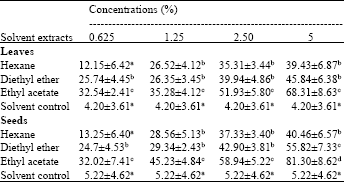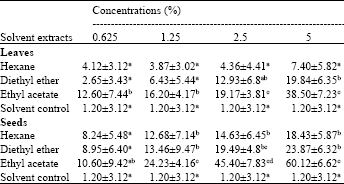Research Article
Bio-efficacy of Solanum pseudocapsicum L. (Solanaceae) against Black Cutworm, Agrotis ipsilon Hufnagel (Lepidoptera: Noctuidae)
Department of Zoology and Botany, Arignar Anna Government Arts College, Musiri, Tamil Nadu, India
S. Premalatha
Department of Zoology and Botany, Arignar Anna Government Arts College, Musiri, Tamil Nadu, India
Sudha Jancy Rani
Department of Zoology (Wildlife Biology), Government Arts College, Ooty, The Nilgiris, India











